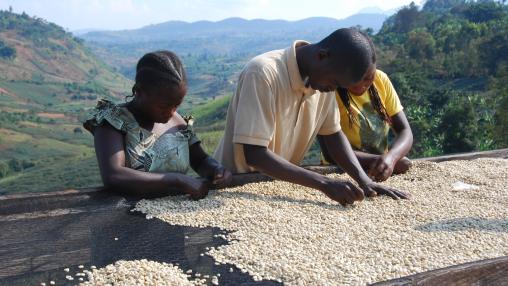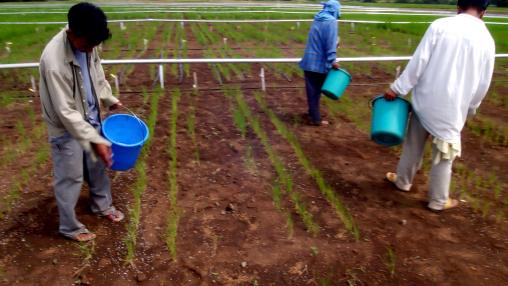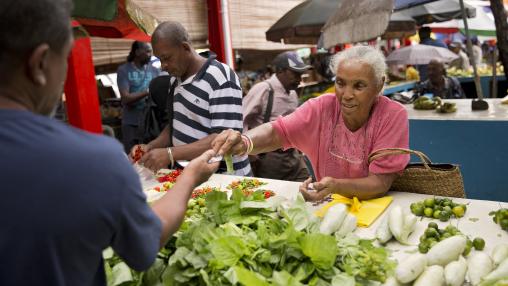Uganda Refugees: Acute Food Insecurity Situation April - July 2025 and Projection for August 2025 - February 2026
This marks a notable improvement compared to the previous period (June–July 2025), when 920,000 people (48 percent of the analysed population) were facing high levels of acute food insecurity. The anticipated improvement is largely attributed to expected increases in crop yields from enhanced agricultural production. In addition, food prices are forecasted to decline with higher production, improving household food availability and access.
Uganda Refugees: Acute Malnutrition Situation April - September 2025 and Projection for October 2025 - March 2026
Three refugee settlements—Adjumani, Bidibidi, and Palorinya—were classified in IPC AMN Phase 3 (Serious). Six settlements (Imvepi, Kiryandongo, Lobule, Oruchiga, Palabek, and Rhino Camp) along with Kampala’s urban refugees were classified in IPC AMN Phase 2 (Alert). The remaining four settlements—Kyaka II, Kyangwali, Nakivale, and Rwamwanja—were classified in IPC AMN Phase 1 (Acceptable).
Uganda: Acute Malnutrition Situation April - September 2025 and Projection for October 2025 - March 2026
Key factors fuelling acute malnutrition include high climate vulnerability—driven by arid to semi-arid conditions and prolonged dry spells that restrict access to reliable and sufficient water—intersects with poor agro-ecological potential, including marginal pastoral and agricultural zones characterized by rocky, infertile soils. Livelihoods are predominantly pastoralist, supplemented by limited single-season crop farming, but remain constrained by low dietary diversity and recurring seasonal food insecurity.
Domestic Food Price Monitor
The Food Price Monitor provides daily updates of prices in wholesale and retail markets for a wide range of food products. Alerts refer to price changes from the start of social distancing measures taken because of COVID-19 and are based on a pre-COVID-19 reference price.

Food Insecurity in East Africa
East Africa facing acute food insecurity as drought continues, alerts FEWS and FAO

Reducing Micronutrient Deficiency with Biofortification
Micronutrient malnutrition is caused by a lack of vitamins and minerals in the diet. Poor people are particularly vulnerable to micronutrient malnutrition, as their diets consist mainly of grains and don’t include many vital fruits, vegetables or animal products.

Rethinking Input Subsidies
After being largely eliminated by structural adjustment programs in the 1980s and 1990s, large-scale input subsidy programs are regaining popularity throughout the developing world, particularly in Africa south of the Sahara. It's estimated that African countries spend, on average, 30 percent of their agriculture budgets on these programs, which aim to increase small farmers' investments in new technologies and increase agricultural production. Despite these programs' widespread use, however, debate abounds about how efficient input subsidy programs actually are.

Latest FEWS Net Monthly Price Watch Released
The newest edition of the FEWS Net Monthly Price Watch was released last week, citing continuing high international maize and wheat prices. While maize prices saw drastic spikes in June and July 2012 due to drought conditions in the US, they leveled off, although at high levels, later in the year as more information regarding US crop conditions and global supplies became available. Wheat prices, on the other hand, rose steadily between May and November before leveling out in December.

Survey Finds East African Farmers Are Adopting New Climate-Mitigation Practices
One of the biggest challenges faced by smallholder farmers today is climate change, and the increasingly variable weather patterns that result from it. While farmers in some tropical regions may benefit from rising temperatures, the majority of the world's smallholders will face increased hardship as a result of warmer weather and uncertain rainfall. Future food security, particularly for developing countries, will depend on how populations react to and cope with the challenges presented by climate change.

How Do Rising Food Prices Affect Men and Women Differently?
With the price of basic food items on the rise, global policymakers are again faced with the need to protect the world’s most vulnerable populations. Women and young children tend to be most negatively impacted by sharp increases in the price of food. However, while extensive research has been conducted on the causes and consequences of the 2007-08 food price crisis, little of that research has focused specifically on the impact of the crisis on women, and whether the impact differs for women compared to men.